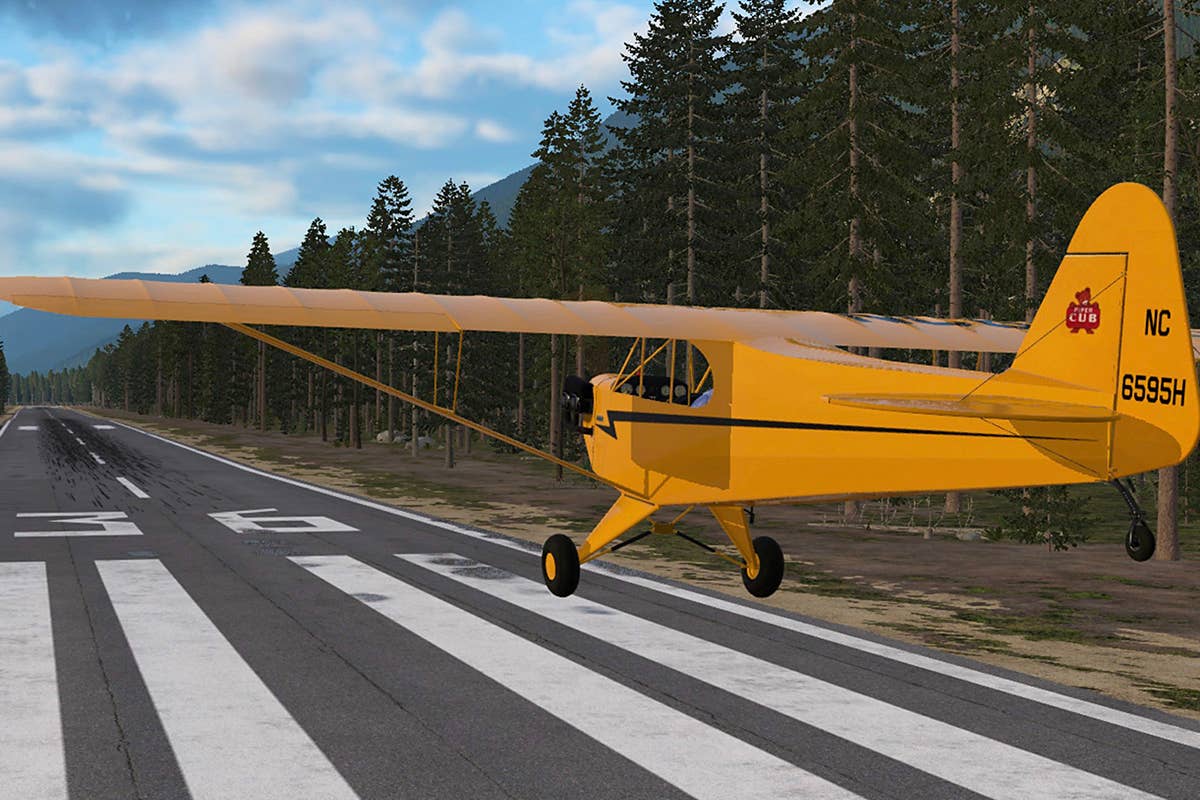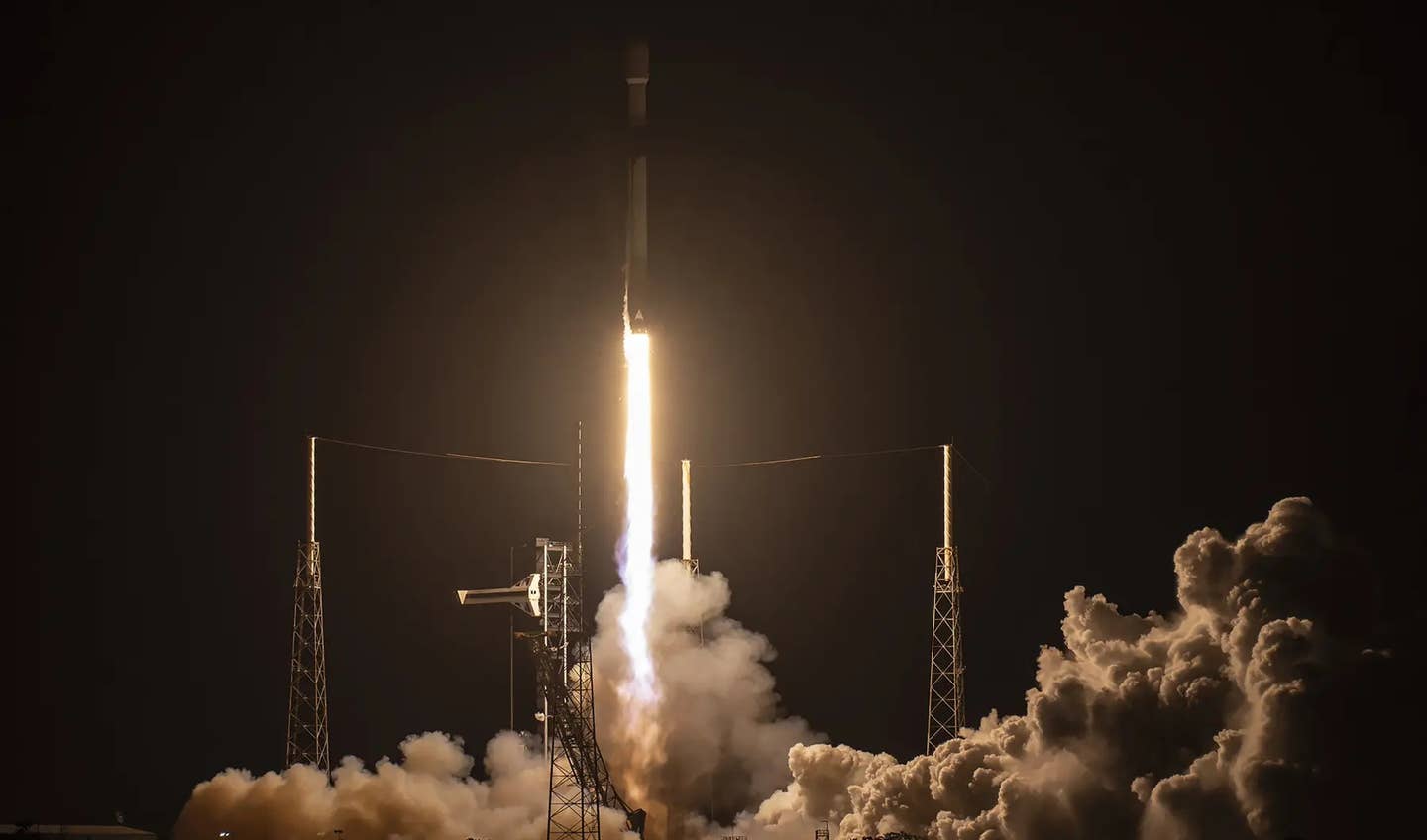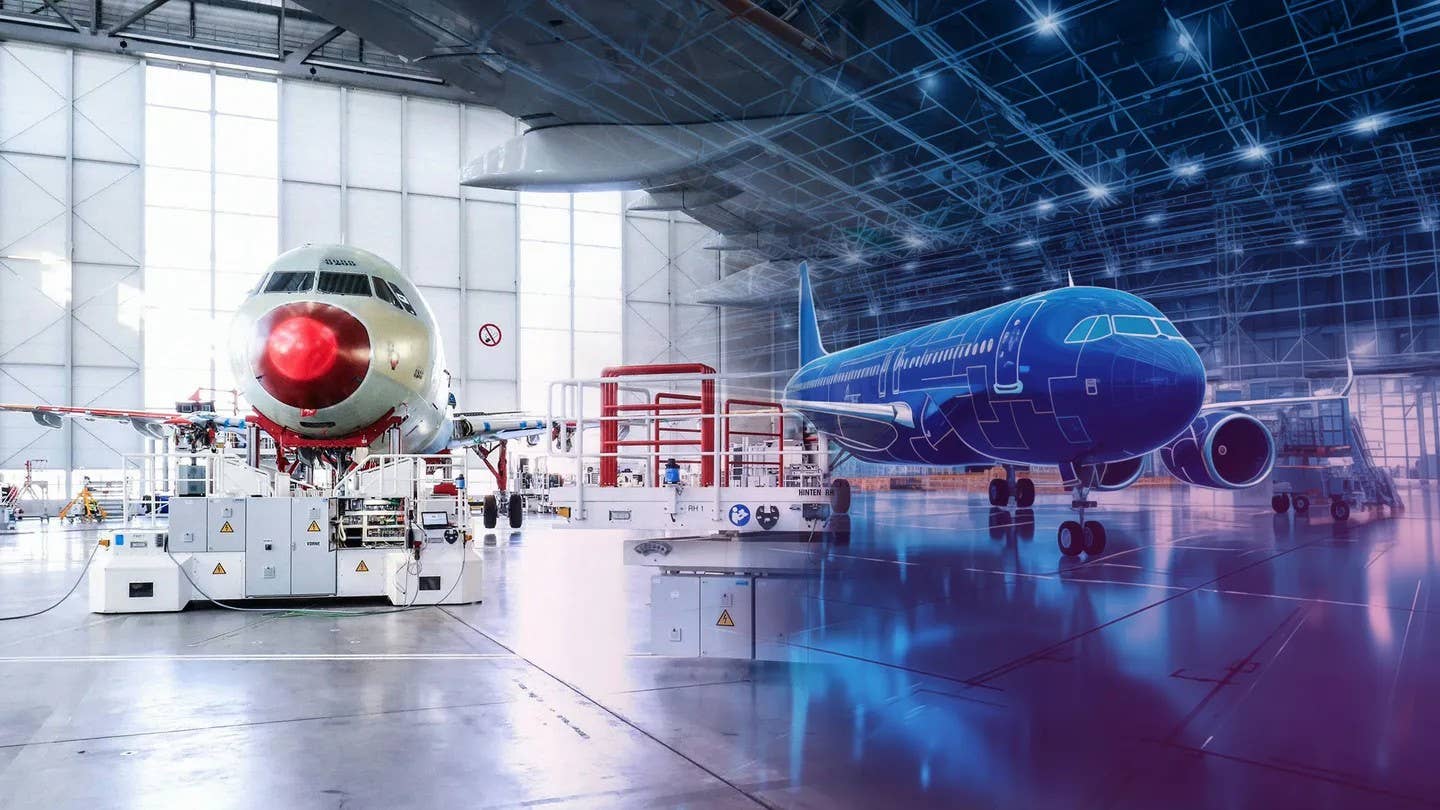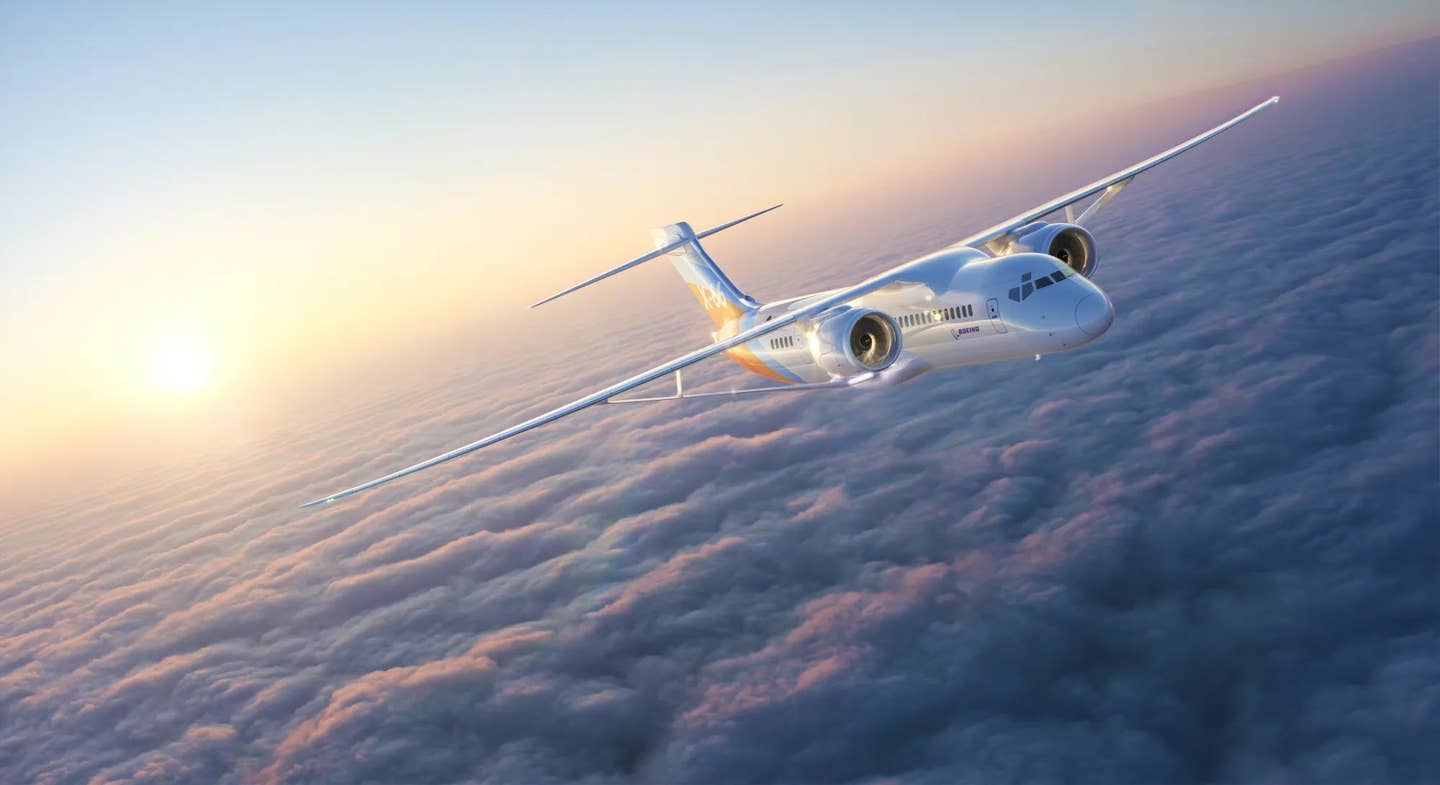Flight Simulators Can Bring Sport Aviation to Your Desktop
Software, such as X-Plane, allows you to try an LSA on for size.

A simulated Piper J3 Cub in X-Plane version 12 is about to touch down on Runway 36 at British Columbia’s Stewart Aerodrome. [Courtesy: X-Plane]
My recent articles on flyingmag.com about light sport airplanes have made some readers curious about the wonderful fuel efficiency and performance of this niche of general aviation, one that makes recreational flying about as much fun as it can be. Maybe you’ve begun to think that an LSA flown with either your current private pilot certificate—or a new sport pilot ticket might be the answer to getting into the sky, but you have questions about how an LSA actually flies.
There is no lack of debate about how LSAs feel in the air. While some think they are too “twitchy” because of their relatively light weight, others think they are nimble, fun, affordable machines that deliver a great deal of desirable “stick-and-rudder” flying on as little as three gallons of automotive gas per hour.
With your curiosity piqued, the next obvious step is to see for yourself just what LSAs can do. The problem is that, unlike heavier legacy fleet airplanes, LSAs are far less common, and dealers are spread out in every corner of the U.S. Lucky for you, though, if you really want to get your hands on an LSA, there is a very good and nearly free option you may not have considered.
A simulated flight in an LSA using the incredibly accurate X-Plane software is the best way to experience this level of recreational flying when a real LSA is not available. I have been using X-Plane since the very first versions, and today’s version 11.5 is a mature, nearly bulletproof simulator that delivers extremely accurate characteristics in all phases of flight.
How the developers at X-Plane manage to deliver such accuracy in flight characteristics is best explained by Austin Meyer, creator of X-Plane.
“In a nutshell,” Meyer said, “X-Plane breaks the airplane down into many small mathematical pieces, finding the local air velocity vector on each piece. Once X-Plane knows the airspeed and direction acting on each bit of the airplane, it can determine the force acting there. Once it has done this for each bit of the airplane wing, stabilizers, props, gear legs, etc., for the entire airplane, X-Plane has the total forces and moments acting on the airplane at any given moment in flight. X-Plane then divides these forces and moment by the mass and moments of inertia of the airplane to get linear and angular accelerations, and then integrates those to velocities and then positions, moving the digital model through space.”
X-Plane has been hard at work developing version 12, which is a full rewrite of the simulation program. I cannot possibly go into all the details here, so if you are curious about what is coming next for this simulator, read their latest X-Plane 12 Flight Model Report, all 25,134 words of it!
As a registered user (free) on the X-Plane site, you will find a large assortment of (also free) LSAs that can be downloaded and flown. These airplanes are vetted for quality, and with only a rare exception, their developers have done their homework to make sure the simulated airplane flies exactly like the real thing.
I spend a lot of time these days flying various LSAs in X-Plane as I write this light sport/sport pilot series, as this gives me a better perspective when the real thing is just not available. Here is a look at a few simulated LSAs I have been flying lately.
Piper J3 Cub
I am lined up where the numbers would be if Runway 13 at Pioneer Airport in Oshkosh (WS17) had numbers. Choosing the Piper J3 Cub with tundra tires, I firewall the throttle and immediately the tail comes up, just like the real thing. I’ve dialed in just 5 knots of crosswind out of 235 degrees, and staying on the rudder pedals keeps the nose pointed down the grass runway, and the X-Plane Cub is off the ground before I know it.
The minimal but also quite realistic avionics in front of me tell me only what I really need to know to stay in the air, and after a quick touch-and-go at the Ultralights Field and a greaser landing right on Boeing Plaza, I take back off and buzz the controllers in the tower, because in a flight simulator, you can do that without hearing from the FAA.
I choose Runway 31 back at Pioneer for my landing, and with a bit of a right-rear-quartering tailwind, as expected in real-life, the Cub is a handful until those huge tundra tires grab the grass below me. The X-Plane Cub flies as expected, and even a small reduction in its limited power brings the nose down into a gentle descent.
Zenith STOL CH701 ‘Sky Jeep’
To give this simulated STOL machine a good workout, I am using Idaho’s Johnson Creek (3U2) with an elevation of 4,690 feet. I’m using Runway 35, and have dialed in wind 011 at 10G12 at ground level. This will be a quick lap around the patch, with steep rising terrain to my left, and much steeper terrain just east of the runway.
With one notch of flaperons, I am off the runway in a blink of an eye, and the Zenith handles the “sporty” mountain winds without flinching. I clean up the airplane and set into an aggressive left climbing turn, seeing 60 kias at 1,000 fpm. Now with a decent tailwind, the CH701 heads south down the valley at almost 90 kias, and I turn back towards the airport, pulling power and adding the first notch of the full-span flaperons. With the airport made in a comfortable 64 kias approach, I drop full flaperons and combined with the simulated Zenith’s fixed leading-edge slats, I slow quickly to 50 kias. Even with the gusty winds, the X-Plane CH701 seems on rails, and I touch down at 45 kias, stopping in what seems like 200 feet.
While I have never flown this airplane in real-life, the sim version did exactly what I expected it would, and handled the bumpy and somewhat demanding landing with zero surprises.
Van’s RV-12iS
Ready to depart Wittman Regional Airport’s (KOSH) Runway 36, the panel of the X-Plane RV-12iS looks exactly like the real thing. The Dynon SkyView EFIS before me will look familiar to anyone who has flown behind this glass.
The RV-12iS flight starts with the canopy open, so the first thing to do is mouse-click the top of the frame, which closes the canopy. Takeoff with no flaps takes 6 seconds, and I am headed for Appleton Airport (KATW) in a 100-knot cruise climb, with the Rotax 912iS giving me 600 fpm. Level at 2,500 msl, I see 113 kias at 5,400 rpm, and after a very stable approach at 70 kias, I touch down on Appleton’s Runway 30 at 50 kias and am stopped quickly, easily making the first taxiway.
The X-Plane RV-12iS is a stable flyer, and even when I dial up the low-level turbulence in the sim’s weather settings on the return leg back to Oshkosh, the ‘Twelve’ stays on course and is easy to control, just like the real RV-12 I flew at the Sebring Sport Aviation show a few years ago.
A Good Investment
At just $59.99 for a digital download, buying X-Plane 11 is sound advice when you are shopping for an LSA. You’ll need a fairly new desktop computer to meet the software’s minimum system requirements, and if you’re not sure of what’s under the hood of your computer, X-Plane has a free demo version that works just like the full version, so you can download it and see if your computer’s RAM and graphics card can handle the rather intense demands that this simulation software places on your system.
If you are a Microsoft fan, their Flight Simulator software has graphics that many feel surpasses X-Plane, and numerous LSAs are available for download either free or as payware. MSFS is sold in three versions, with the standard edition being $59.99, and it also comes in a deluxe edition for $89.99 and a premium deluxe version for $119.99.
One note about flight simulators that should not be ignored is the need to use a quality flight control stick or third-party yoke/throttle/rudder pedal setup for the best experience. I use a very well-built VKB Gladiator MKII flight stick that has numerous buttons and switches that are easily programmable to suit my type of simulated GA and commercial aircraft flying. Without rudder pedals, X-Plane’s AI engine simulates yaw; however, a twist of the Gladiator MK11’s “joystick” does offer very accurate rudder pedal operation. (Note that the controller I use has been discontinued, but VKB’s other flight sticks are available here.)

Sign-up for newsletters & special offers!
Get the latest FLYING stories & special offers delivered directly to your inbox






